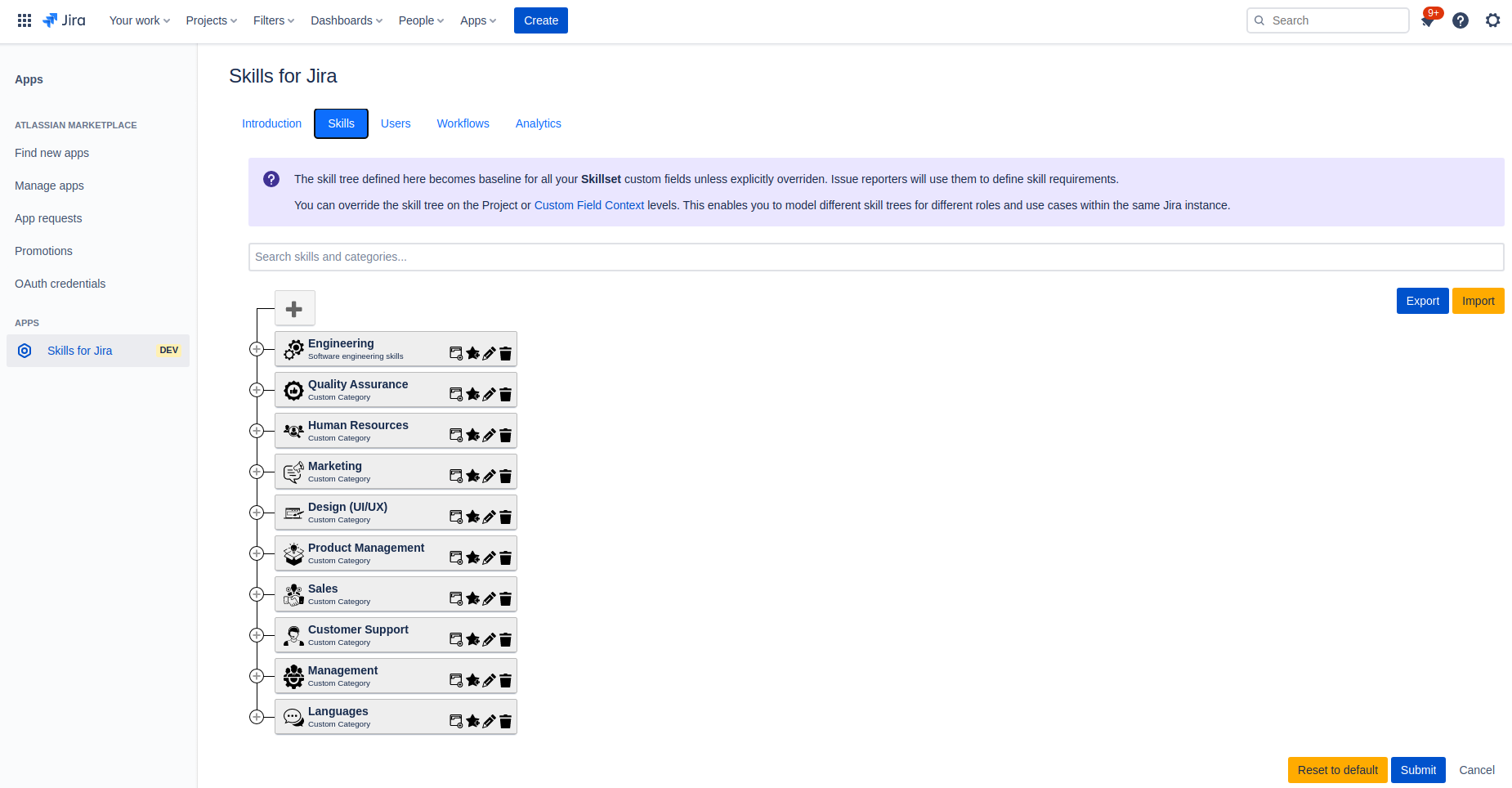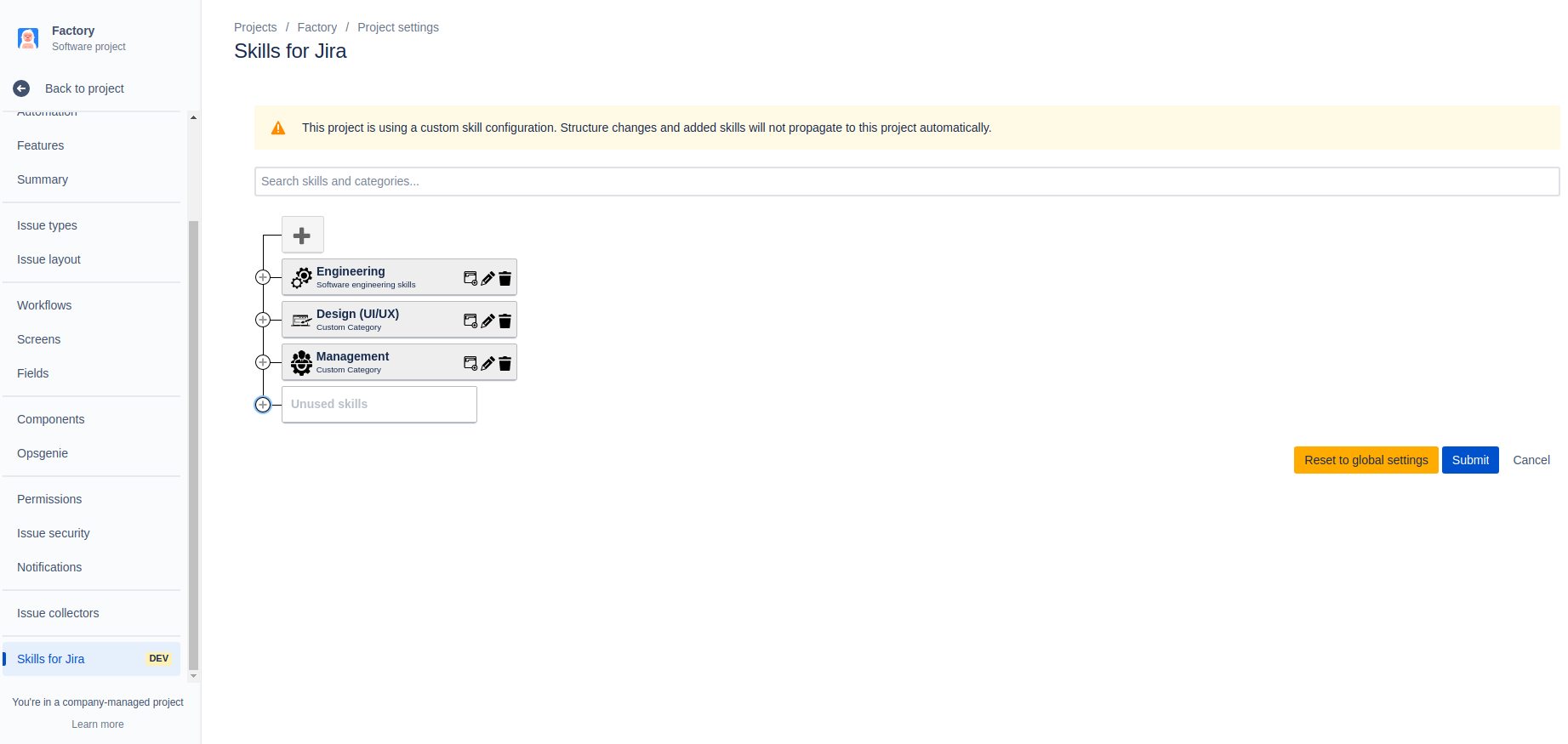“Skills for Jira” comes with a basic Skill Tree out of the box, to get you started quickly without spending time on filling in common skills like programming languages or software tools.
Keeping a map of common skills across the organization and the ability to easily navigate it or impose skill-based restrictions on issue transitions can be extremely useful in environments where projects and/or workers change frequently. It, however, might be less relevant for teams in less dynamic environments (e.g. a static established team dedicated to a single product) .
Luckily, use cases of “Skills for Jira” are not limited to tracking generic skills. Rather, this is just a tip of the iceberg.
Mapping product/organization-specific knowledge
Teams that are operating complex, highly specialized (e.g. Telco), and/or old products have very specific challenges in terms of knowledge management. It is not uncommon for a team to uncover a knowledge gap when a person who created or maintained the complex component has left the team. From that point, the component may continue to remain functional, but effectively becomes immutable and will forever remain a burden, impairing growth and evolution as well as acquisition possibilities.
“Skills for Jira” helps you not only maintain the map of these critical bits of knowledge scattered across your team, but also spot the scarcity problem early, before it is too late to act.
The common approaches for solving the scarce knowledge problem include creating documentation and transferring knowledge within the team.
Let’s explore the tools you get for maintaining your knowledge map:
Controlling Skill Tree granularity
Global skill configuration
Global configuration is the place where you manage all skills relevant for your organization. These are the skills that you assign to your team members and that are automatically kept in sync between Users and “Skillset” fields.
All your product-specific skills must be included in your Global skill tree. You can then filter the skills relevant for a specific project or custom field.
This way the admin console is the single place to manage your skills and users' qualifications.
You can delete any category or skill in the global skill tree without worrying about accidental data loss. Issue and User skill mappings will be updated in 24h, unless you undo the deletion by restoring deleted skills from an Export or simply re-adding them with the same names.
Deleting skills from the global skill tree affects all projects and custom field contexts.
Project-specific skill configuration
You can narrow the global skill tree down for a particular Jira project. This can be used to model project-specific knowledge requirements.
Once you configure a custom skill tree on the project or custom field context level, additions/updates to the global skill tree stop propagating to the project/field context automatically.
You can always reset the Project- or Custom Field context-level skill tree to the baseline global configuration and resume propagation
Custom Field Context-level skill configuration
Same can be done on the custom field context level. Custom field contexts are different configurations of the same field. You can leverage them for configuring different skill tree configurations on the same custom field for different project/issue type combinations.
https://www.youtube.com/watch?v=0mhfRCXNJw8Import/Export
The ability to import/export your skill tree can help you with safe experimentation. Instead of using the UI, the Import feature enables you create your skill tree in JSON format, allowing you to store it in source control.
You can also reset your skill tree to a default configuration, benefiting from new skills rolled out by “Skills for Jira” overtime.

